Soviet submarine fleet during the Cold War
The famous "doctrinal provisions of the struggle against Russia" by A. Dulles (1945) and the "Fulton speech" by W. Churchill (1946) marked a sharp aggravation of the military-political situation on the planet. It was then that a new historical stage - the stage of the "cold" war between East and West, called by some political observers the "third world war without use weapons"At the same time, in the spring of 1949, the United States initiated the creation of a NATO military bloc, which exists today. It was intended to threaten the Soviet Union from the western directions, and to create a military threat to the USSR from the east and south, the CEATO and CENTO blocks are organized, disintegrated in 1955 and 1977 under these conditions, our country in 1979 entered into a defensive alliance with the neighboring countries of Eastern Europe, known as the Warsaw Pact, which disintegrated simultaneously with the liquidation of the Soviet Union in 1955.
During the post-war decades, the United States, which led the coalition of the opposing states and separated by the ocean, both from the USSR and from most of its allies, in military construction directed the main forces to develop their naval forces and especially their nuclear missile component. The Americans ultimately deployed up to 70% of the state’s nuclear potential on nuclear-powered submarine-based missile carriers. The US Navy provided in 60 - 70's. two thirds of the existing nuclear submarines carrying ballistic missiles (SSBNs) in the ranks of two-thirds of the existing 41. One third of them were in factory repairs. At the same time, from among the combat-ready missile carriers, half of them constantly patrolled into the sea. Thus, the operational voltage ratio of the combat-ready SSBNs was 0,5, and relative to the total composition of such ships, it reached the value of 0,034. These submarines performed an average of 90 patrols throughout the year. Similar coefficients of operational voltage of their naval nuclear forces persist even today, when the US Navy has 14 SSBNs of a much more powerful Trident strategic system, with a total number of warheads over 2000 pieces.
In the same period of time, having more than a hundred multi-purpose nuclear submarines (PLA), the US Navy 15-22 of them were constantly kept on combat patrols. Every year they carried out the order 100-120 of such campaigns. In their course, antisubmarine, reconnaissance and other tasks were carried out, including in the Barents, Japan and Okhotsk seas, often with penetration into the territorial waters of our country. Beginning in the sixties, US Navy submarines began to develop areas of the Arctic, whose voyages became regular for them, and the intensity of the latter, has not had a significant decrease so far.
From the 16-20 in effect in the 50-70-s. US aircraft carriers, half invariably in service, and 3-4 - in the sea, in advanced areas off the coast of Europe and Asia. Now in the US Navy there are 11 aircraft carriers. However, a decrease in their total number did not affect the composition of the advanced groups.
To ensure that their forces were based in Europe in the sixties, the United States leased bases for Holi Loch (England) and Rota (Spain) for SSBNs, and Naples and Augusta in the Mediterranean Sea for aircraft carriers. And on the Asian continent, Apra Bay (Guam Island) was rented for strike submarines, and the ports of Yokosuka and Subic for aircraft carriers. The United States has shown and continues to pay particular attention to the geopolitically and strategically important region of the Mediterranean Sea. The U.S. naval squadron, which was constantly there back in wartime, was transformed into the 6th Fleet in the late forties, which became a means of strategic pressure on the Arab states, which were trying to pursue a policy independent from the USA. Also, this fleet served as a direct threat to the USSR and its friendly states. Suffice it to say that the number of constantly patrolling at this theater US SSBNs with missiles aimed at our territory increased from 1963 to 1967 from 2 to 10 units, and the backbone of the 6th fleet amounted to 2 aircraft carriers, 2 cruisers and more than a dozen destroyers and frigates.
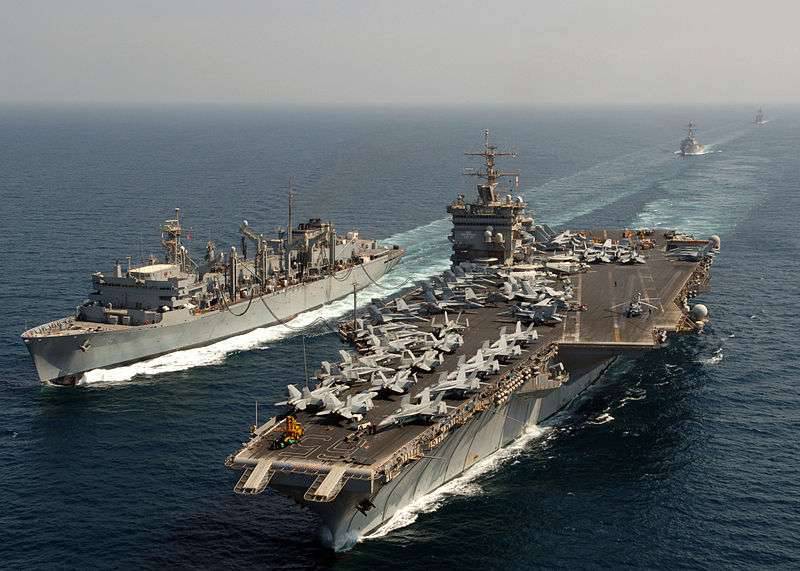
The basis of the US Navy in the waters of the Pacific and Indian Oceans was the 7 th operational fleet, whose composition, depending on the current situation, changed from fifty to 227 warships and support vessels. In addition, in the second half of the seventies, the US Navy began to be rapidly equipped with new weapons systems, including long-range ballistic missiles, the anti-ship Harpoon and the cruise Tomahawk. It should not be forgotten that the process of development and improvement of the fleets of the US allies in the military blocs was parallel: Great Britain, France, Italy, Spain, Germany, Japan, etc.
In all this, it is not difficult to discern the desire of a potential enemy to block the USSR and its allies from the ocean and sea directions, and in order to change this situation, we needed to create our own ocean fleet. However, the geostrategic position of our country, which did not possess foreign naval bases, forced our naval forces, operating far from their territory, to act predominantly autonomously, and to reach the ocean in almost all directions, it was necessary to overcome the narrowness and straits that were controlled by the combined US Navy and NATO. Under these conditions, forces capable of acting covertly were most effective. And therefore, although construction of a powerful ocean surface fleet was going on in the USSR, the main emphasis was still on creating submarines, first with diesel-electric and then with nuclear energy, and therefore submarine forces became one of the main branches of the Navy.
The development and issuance of tactical and technical specifications for the creation of a new post-war submarine generation was carried out back in 1946, at the same time the development of the existing shipyards and the construction of new enterprises began. At the same time, the creation of new points of deployment of submarines in the fleets, first of all in the North and Pacific, the expansion and conversion of training detachments for training submariners, as well as the creation of new naval schools for the training of submarine officers began. Already in the early postwar years, the Navy was replenished annually with 8-10 new submarines, in the fifties their number reached 40 - 60 units. a year, and the record was the 1955 year, when the 72 submarines were immediately put into operation by the Soviet Navy.
In the same period of time, we set about creating nuclear submarines. In the 1958 year in Severodvinsk, on our first nuclear submarine, the Naval flag was raised, and after just 10 years in the Soviet Navy there were already more than 50 SSNs. In 1960, the construction of specially designed strategic missile submarines (SSBN) began, the first of which in the amount of three were commissioned in the 1967 year, and in just 25 years they were built by the 91 unit.
Even the United States did not have such a pace of construction of the submarine fleet, and this is certainly an indicator that only a country with the highest military-scientific and economic potential could withstand it. However, according to some experts, in the construction of the submarine fleet, especially in recent decades, some miscalculations were made, the main of which is usually given: lack of unification and standardization, expressed in a large number of projects of submarines of various purposes (only ballistic missile submarines numbered 7) projects with winged ones - 5, and multipurpose projects - 9), which naturally increased the cost and complicated their construction and operation; the imbalance between the shock systems (directly SSBN, submarine and submarine) and the infrastructure to support their activities. However, there was another side that should not be forgotten: each new project was a step forward in the development of design ideas, precisely because of the large number of submarines embodied in the metal and the experience of their operation, the Soviet Union became the world leader in submarine construction.
The presence of a constant threat in the fifties from the maritime and oceanic directions from the NATO Navy, a large part of which constantly had the highest degree of readiness to use their weapons not only at sites located on the coast, but also targets located deep in our territory, forced the Soviet Navy go to more action. At first, this was expressed in the periodic exits of ships and submarines in the ocean and long-range maritime zones in order to monitor foreign naval ships and counter them if necessary. In this case, the first long hikes of diesel boats for full autonomy were performed in 1956 year. But it was not yet combat service in its modern sense.
The origin of the combat service of submarines can be attributed to the end of the fifties, when a group of our submarines was sent to one of the geopolitically important areas - the Mediterranean Sea. There in the Gulf of Vlora on the Adriatic, by agreement with Albania, in August 1958 began to base our submarines 4, and a year later their membership was increased to 12. During this period, our boats not only demonstrated the presence of the Soviet Union in the region, but also solved containment tasks. For example, at the end of 1959, submarines of the 613 project under the command of V. Kozlov, while at sea, penetrated the warrant of a detachment of US warships led by the flagship cruiser Des Moines, on board which at that moment was President Eisenhower, which caused stir in the US Navy. However, in the 1962 year, due to the rupture of relations with this country, 8 boats were returned to their bases, and 4 remained in Albania.
But if, until 1964, the Navy’s ships, including submarines, made only single trips in the Mediterranean Sea, then in September of this year a detachment of ships had already gone there, and since July of the 1967, an operational squadron was organized there on an ongoing basis, which included several submarines and submarines. At the same time, Soviet boats mastered other waters of the oceans. For example, it is widely known that in the summer of 1962, the Lenin Komsomol submarine made the first expedition in the history of our fleet under the Arctic ice to the North Pole, where it surfaced. The following year, Arctic transitions under ice from the North to the Pacific Fleet were carried out by a torpedo submarine of the 627A project and a missile submarine of the 658 project, and another 627 project submarine made an ice-breaking campaign in the Arctic. In the same year, the first combat patrol in the northeast Atlantic was launched by a missile submarine of the 629 Ave., and the PLA of the 627A Ave. completed a campaign to develop the equatorial zone of this ocean.
In 1964, for the first time, a group transition was made by the southern route of two nuclear submarines (Ave. 627А and 675) from the Northern to the Pacific Fleet. At the same time, the boats of the Pacific Fleet mastered the waters of the northern Pacific Ocean, as well as the Philippine and South China seas. During the year, submariners made five trips to these areas, in the 1965 year - 12 and in the 1966-th - 27. It can be noted that as the submarine fleet increased in number, the number of boat trips to remote areas increased, and the occasional autonomous voyages became a regular combat service, which, it should be remembered, was a response measure to the activities of the NATO Navy. As a result, by the mid-seventies we moved from a single navigation of ships and submarines - to the creation of operational and operational-tactical connections, constantly operating in various areas of the oceans; occasional and time-limited observation of the NATO strike forces to the task of winning dominance in the most important sea and ocean areas; single exits to patrol diesel submarines carrying ballistic missiles to organize and create a system of nuclear deterrence of aggression by the forces of the naval nuclear forces of our state.
From year to year the number of submarine campaigns to combat service increased. If in 1968, the following tasks were performed: 1 - SSBN, 12 multi-purpose PLA, and 88 diesel submarines, 1984, 89 and 85, respectively, in 72. During this period, the nuclear missile potential of our state, deployed at sea, has grown more than 200 times, and the firing range of ballistic missile submarines (SLBMs) - by 4 times.
It is worth noting that the main differences in the military service of the Navy, in contrast to the other types of armed forces of the Soviet Union, in the peace period were:
- large spatial scope (if in the sixties the combat service of our submarine forces covered up to 100 million square kilometers, or about 30% of the World Ocean, then in the eighties it exceeded 250 million square kilometers, or almost 70% of its water area);
- a significant distance from their bases and their own territory (up to 15000 km), where the conduct of the daily activities of other branches of the armed forces of the state is simply impossible;
- direct contact with the forces and means of foreign fleets in the face of their opposition, including the search for its groupings and tracking them.
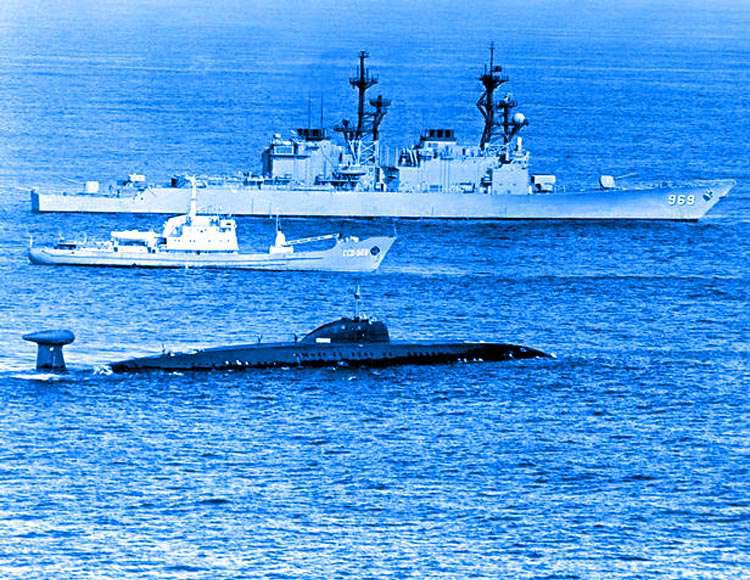
In other words, the forces of military service turned into the forward echelon of not only the Navy, but also of all the armed forces of our state, solving operational tasks in peacetime and being in the highest degree of combat readiness. The peak of the tension of military service falls in the mid-eighties, after which its gradual reduction began, and from 1991, an avalanche-like decline.
Speaking about the activity of our submarine forces in the post-war decades, it should be remembered that they systematically participated in all major exercises that were held in the framework of joint activities of the joint armed forces of the Warsaw Pact and the Ministry of Defense of the USSR, as well as in exercises of the Navy and fleet scale. Thus, at the first major teaching of the Northern Fleet "Pechora", which took place in the summer of 1965, 48 submarines were deployed (of which 8 nuclear, 4 diesel rocket and 36 torpedo diesel); on the maneuvers "Ocean-70" SF deployed 40 PL (including 10 atomic), TOF - 28 PL (9 atomic); on the maneuvers "'Ocean-75" came out with SF 35 PL (of which 13 atomic), with TOF - 24 PL (10 atomic); on the exercises "North-77" SF put 22 PL (10 atomic), and the Pacific Fleet on the exercises "Rainbow-77" - 21 PL (10 atomic); more than the 80 Submarine and Submarine, including the strategic submarine 50, entered the Atlantic Ocean on the “Ocean-21” teaching.
The history of the origin and development of combat service has retained in the relevant documents the nature of the tasks assigned to the submarine commanders. So, in the fifties, their main task was to conduct reconnaissance, identify the activities of various potential adversary forces and develop navigation areas. The data of their reports, as well as the reporting documents of the warhead commanders and the submarine chiefs of services of the submarines and the submarines, were examined and studied at the central directorates of the Navy, on the basis of which relevant conclusions and recommendations were given to improve the methods of training forces for combat service and ways to solve the tasks. However, the term "combat service" was first legalized by directives of the Commander-in-Chief of the Navy and the Chief of the Main Staff of the Navy 1963 of the year, which defined the tasks of the Northern Fleet for the 1964 of the year.
It must be said that in the first governing documents the formulation of the tasks of the combat service was relatively non-specific. Subsequently, based on the analysis of the experience of the Navy’s combat service verified by the officers of the Navy General Staff, the Naval Academy and the NII Research Institute, the Commander-in-Chief presented to the Minister of Defense a report on the results of his military service for 1964-1965. Based on the review of these materials, the latter decided to continue carrying it by the Navy in the Atlantic, the Arctic and Pacific Oceans, and a special directive was issued by the Chief of the General Staff. Then, in November of 1965, a military-theoretical conference on combat service problems was held, where common views on its conduct were developed. As a result, from 1965 to 1968 alone, more than 20 guidelines were issued on various combat service issues.
Since 1970, the military service of the Navy has been regulated by special instructions and manuals. Fleet headquarters, marine aviation and rear, as well as specialized research institutes of the Navy. Their proposals were summarized and considered at the General Headquarters, at other central and main departments of the Navy, after which a corresponding document was prepared for signature by the Commander-in-Chief of the Navy.
As a result, by the mid-seventies, the tasks solved by submarines in combat service crystallized more clearly in the governing documents. The main ones were:
- combat patrol and duty of the SSBN in readiness for launching missile strikes against specified targets on enemy territory;
- search for missile and multi-purpose nuclear submarines of foreign naval forces and further tracking them in readiness for their destruction in the event of a war;
- monitoring aircraft carrier and other strike groups of ships of NATO and other foreign navies, tracking them in designated areas in readiness for strikes against the main targets with the outbreak of hostilities;
- obstruction and prevention of reconnaissance activities of foreign submarines and surface ships on the approaches to the Soviet coast;
- ensuring the interests of our country and preventing the aggressive actions of the potential enemy's navy in important areas of the oceans.
Due to the fact that by the mid-eighties with the equipping of our submarine submarine missile-carrying submarines of intercontinental firing range, they mostly began to patrol in the near zone of the fleets, these tasks were supplemented by another - combat support of SSBN to give them high combat stability in the event of war.
Considering the military service of the Navy, it should be noted that it not only became the main daily activity of the fleet during the peace period and the highest form of maintaining their combat readiness, but also was the main experimental laboratory for checking the correctness of the principles of construction of the Navy in general and its individual systems in particular. The basis for this was the reporting documents for the campaigns of ships and submarines in combat service. Initially, an analysis was carried out, and conclusions were made on individual campaigns, then, from 1968, such conclusions became “quarterly”, from 1969, “semi-annual”, and finally, with 1971, annual. At the same time, from 1968, all branch research institutes of the Navy and relevant branches of the Research Institute of the Defense Ministry were involved in the analysis of trips by specialty. As a result, such a long-term analysis of combat service led to the development of a special methodology for conducting research in this area, which allows assessing the solution levels of each combat service task and identifying the factors most significantly reducing these levels, as well as developing recommendations for improving combat service organization and to increase the effectiveness of the actions involved for its force. Over the years, over 2000 proposals and recommendations have been developed, more than 80% of which have been implemented in the fleets and in industry, giving a significant practical effect.
Sources:
Kuzin V., Nikolsky V. USSR Navy 1945-1991. SPb .: Historical Maritime Society, 1996. C. 12-23, 28-30, 46, 458-460. 538-542
Kostev I., Kostev G. Underwater Fleet from Stalin to Putin. Book 2. M .: Soneks-center, 2008. C. 23-79.
Patrushev V. Underwater forces in the second half of its history. // Sea collection. 1993. No. 6. C. 11-16
Y. Vetrov. The development of Soviet submarine forces from 1945 year. // Military parade. 1998. No.6. C. 57-62
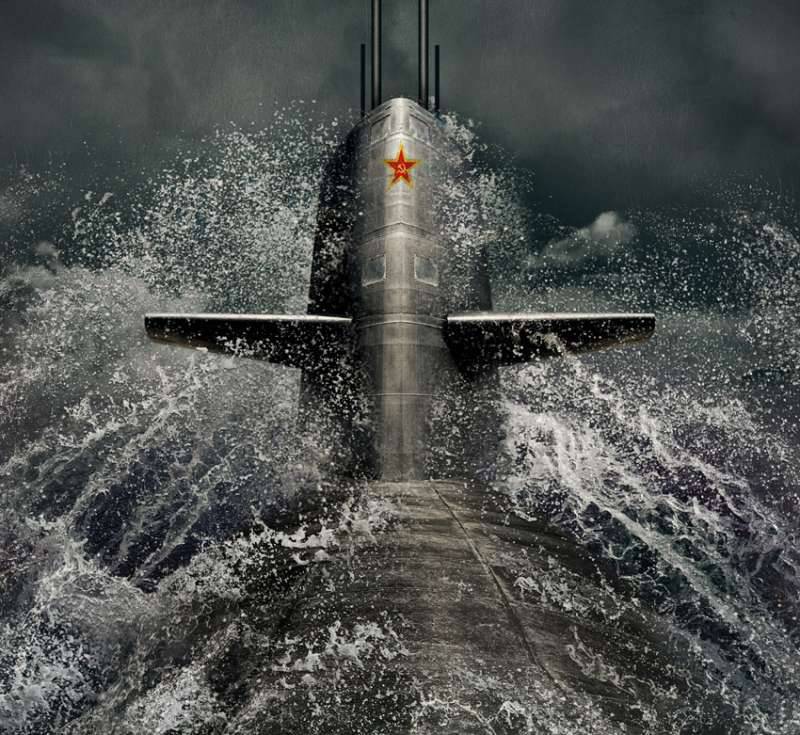
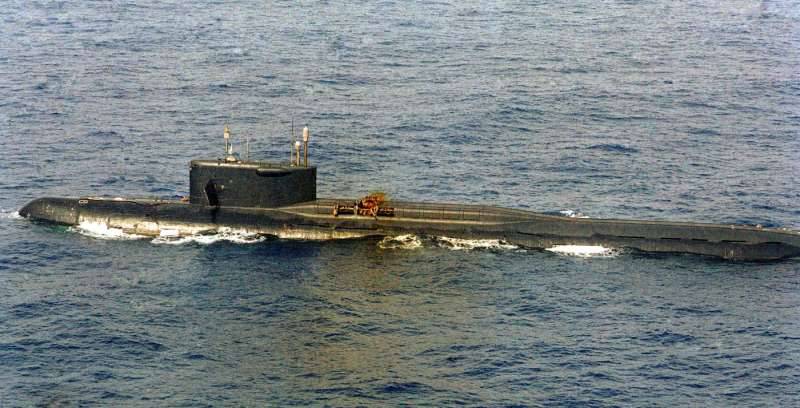

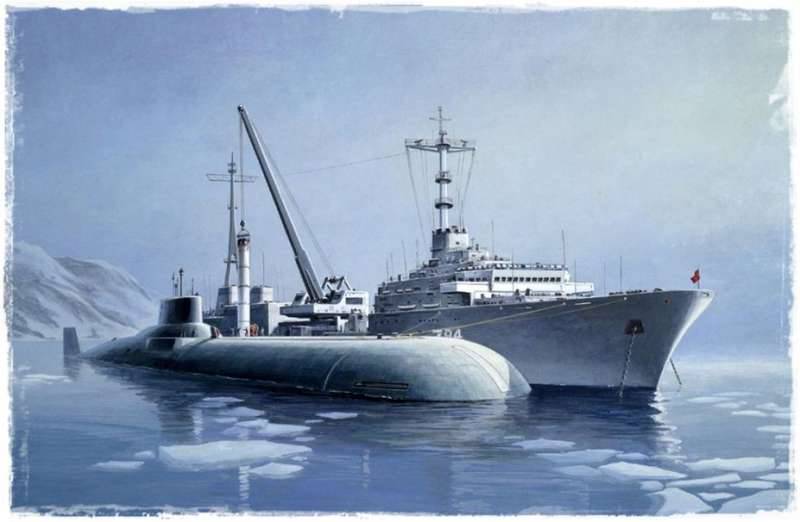
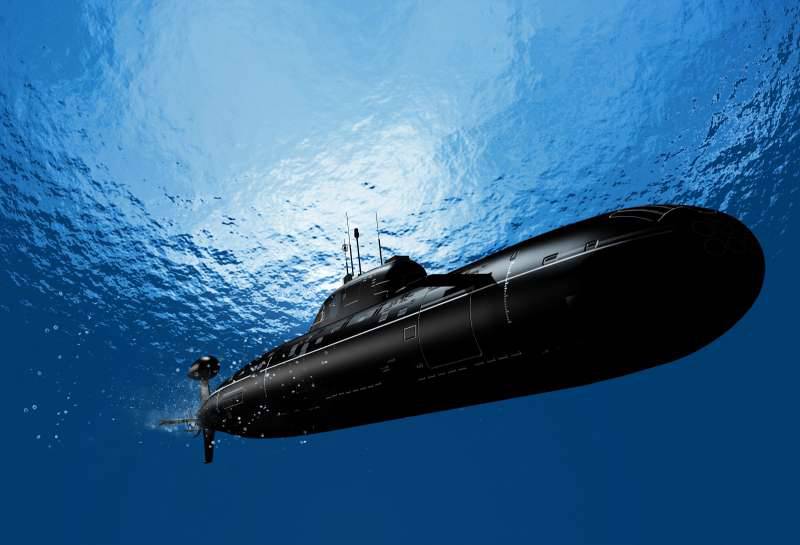
Information